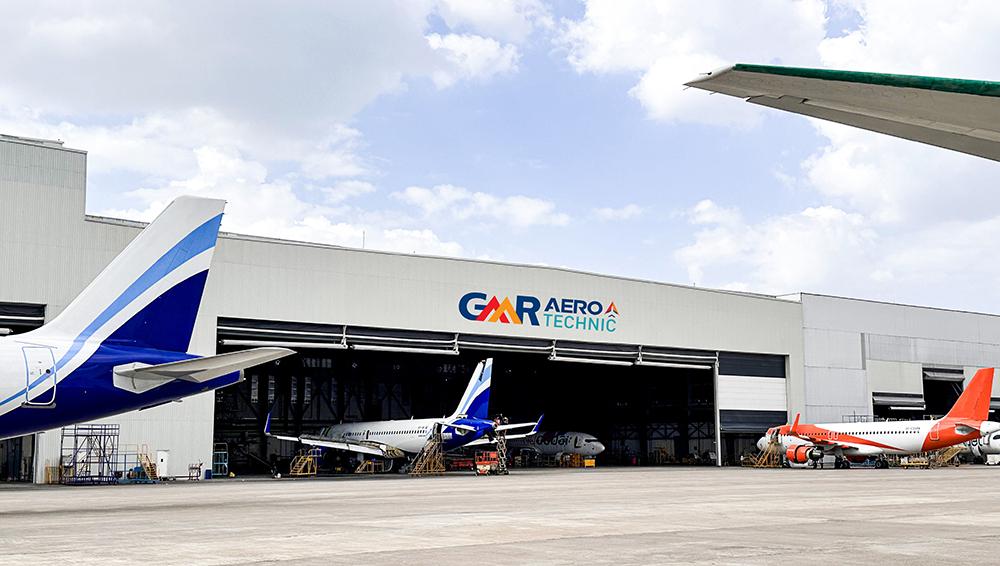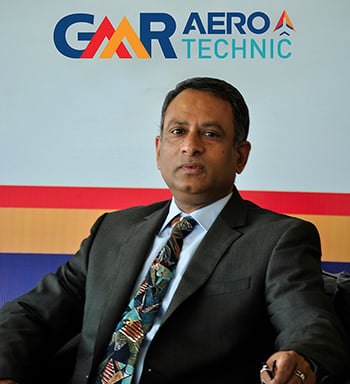
As one of India’s largest airframe MROs, GMR Aero Technic is undergoing robust expansion to meet the country's growing demand. Ashok Gopinath, president and accountable manager at GMR Aero Technic, spoke with Aviation Week Network about its expansion plans and how it is approaching training, technology and supply chain issues.

As Indian airlines place huge aircraft orders and new aircraft are being delivered very week, what kind of demand are you seeing for MRO work and how is GMR Aero Technic tackling this?
The demand from the Indian domestic market has surged significantly with the induction of new aircraft into Indian skies, primarily for modifications, cabin reconfigurations, ad hoc work, livery painting and end-of-lease checks. Regular heavy maintenance checks, such as C Checks, are expected to commence as these new aircraft mature into their maintenance cycles, typically due in 2-3 years.
As the largest commercial airframe MRO in India, GMR Aero Technic has captured the lion’s share of this increased demand, including maintenance hangar slots and livery painting, while continuing to support international customers from the Middle East to the Far East for their heavy checks, livery painting and end-of-lease requirements. Our MRO holds Part 145 regulatory approvals from 29 countries, enabling us to cater to international airlines and customers. To meet rising demand, we now operate our paint hangar in three shifts, have trained our manpower on multiple aircraft types and added a narrowbody hangar during the COVID-19 pandemic to further increase capacity.
We also run continuous improvement programs like 5S and Lean Sigma to enhance operational efficiency and optimize resource utilization. The introduction of automation in tool management, such as the Snap-On Automated Tool Control system, streamlines tool issuance and returns, improving efficiency. Additionally, our enhanced ERP [enterprise resource planning software] and digitalization of maintenance documentation through the Mechanic Anywhere application on iPads will help achieve a paperless operation by March 2025.
What other capacity and capability expansions are you planning?
Our next phase of expansion includes constructing a widebody hangar with painting capabilities and two additional narrowbody hangars, catering to Boeing 787 and Airbus A350 aircraft. This facility is expected to be operational by March 2026, with one hangar dedicated to our growing defense MRO business.
To meet the demand for qualified aircraft maintenance engineers and technicians, we have established the GMR School of Aviation with Airbus as our knowledge partner, under India’s Directorate General of Civil Aviation (DGCA) and European Union Aviation Safety Agency (EASA) Part 147 approvals. The school offers training in aircraft basic maintenance engineering, type training and ancillary aviation courses. The first batch of basic maintenance training began in July, with plans to expand further in the coming years to meet increasing industry needs.
As more foreign OEMs and third-party MROs eye India with interest, what is the potential for a future joint venture?
A joint venture between Indian MRO players and foreign OEMs or MROs is highly plausible and would offer significant benefits to both parties. Some noteworthy projects—like Safran establishing their Leap engine MRO in Hyderabad Airport's SEZ area, Thales announcing plans for an Avionics MRO in Delhi, the Air India-SIAEC MRO project in Bangalore and the Tata-Lockheed Martin MRO for the C-130 global fleet—offer plenty of opportunities.
At GMR Aero Technic, we have embraced a collaborative approach to growth and are currently in discussions with several OEMs and major players to expand our capabilities in airframe and component MRO. Going forward, we anticipate more entrants establishing facilities in India, either independently or through joint ventures, to cater to both domestic and global markets.
How is GMR Aero Technic dealing with the industry’s supply chain challenges?
The Indian MRO industry is currently facing significant supply chain challenges, primarily due to global disruptions, long lead times for spare parts and dependency on foreign suppliers. These issues have been intensified by the rapid expansion of airline fleets and increased maintenance demand, putting pressure on MROs to meet turnaround times while managing inventory shortages.
GMR Aero Technic is tackling these challenges through strategic agreements and tie-ups, and measures such as diversifying suppliers to reduce reliance on a single source, getting into long-term agreements with suppliers and optimizing inventory management by using predictive maintenance models to better forecast demand for parts. We are developing certain maintenance planning tools using artificial intelligence applications, to provide enhanced visibility on check planning and materials management.
What is your take on the changing picture of India’s MRO industry?
The Indian MRO industry is undergoing a major transformation, driven by rapid fleet expansion, government reforms and increasing demand for localized services. Traditionally, Indian airlines relied on overseas MRO facilities due to cost advantages and limited domestic capabilities. However, this is changing as the government introduces favorable policies, and Indian MROs are investing in infrastructure, global quality, safety and maintenance standards. They are also adopting best practices and expanding their service offerings, leveraging India’s labor cost advantage and flexibility to meet evolving customer demands while ensuring customer satisfaction.
Companies like GMR Aero Technic are expanding their capacity, adding widebody and component MRO capabilities, and securing approvals from major regulators such as the FAA, EASA and DGCA. This shift is reducing turnaround times, lowering inventory costs and driving efficiencies. The focus on indigenization, along with defense partnerships, is positioning India as an emerging MRO hub for both civil and defense sectors, fostering a more self-reliant and robust aviation ecosystem.





